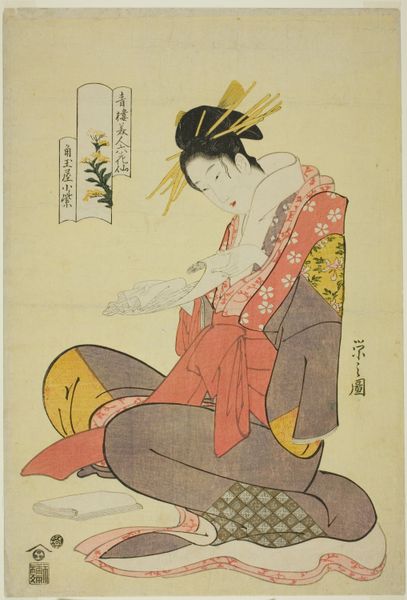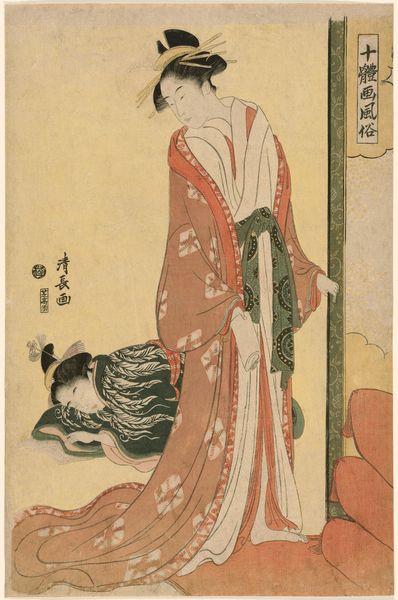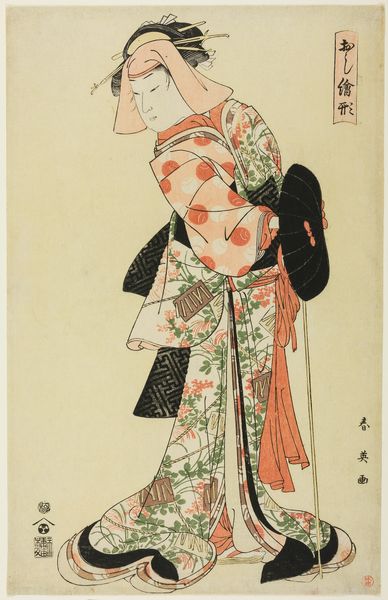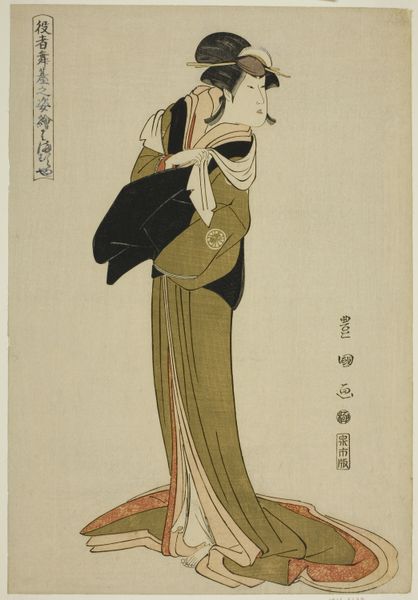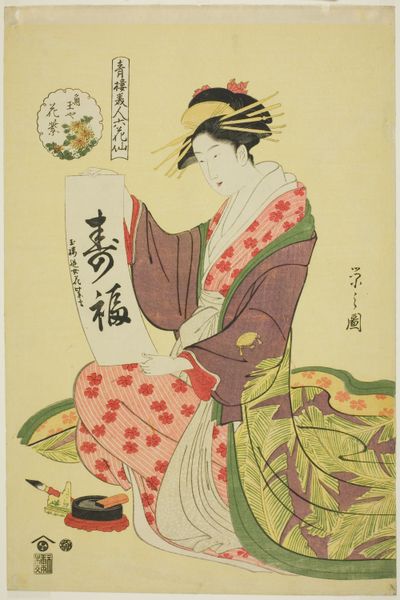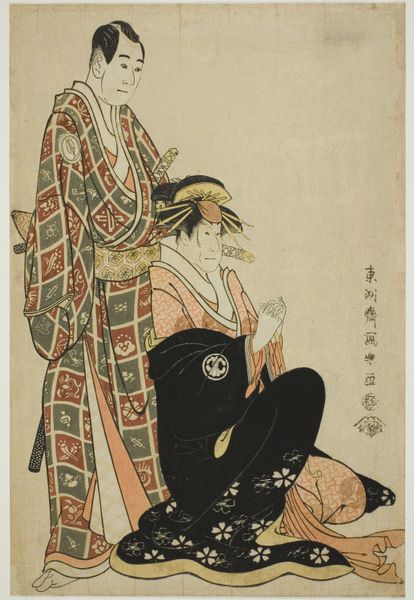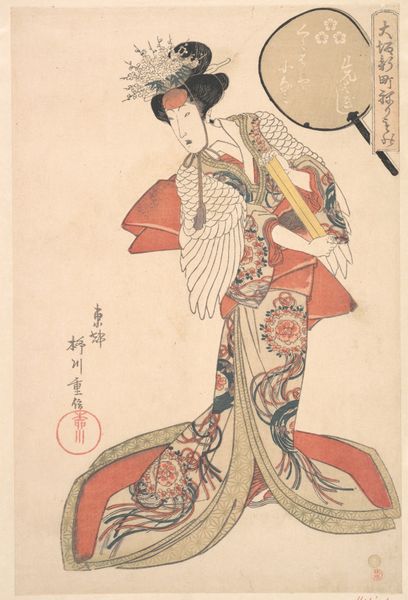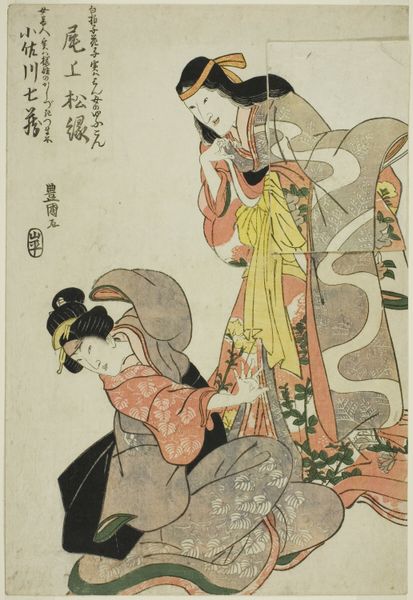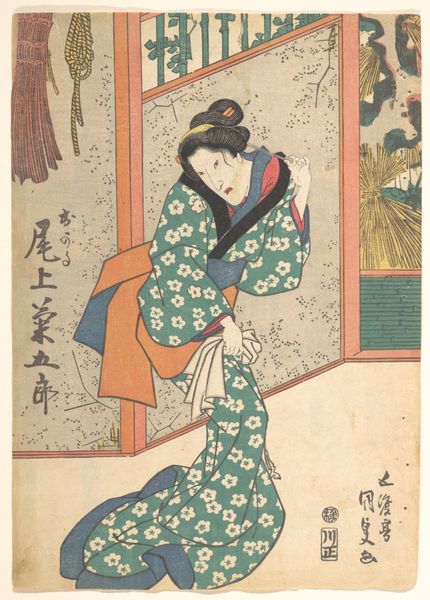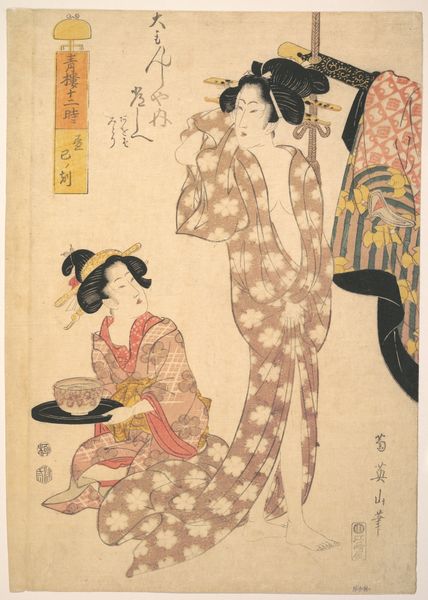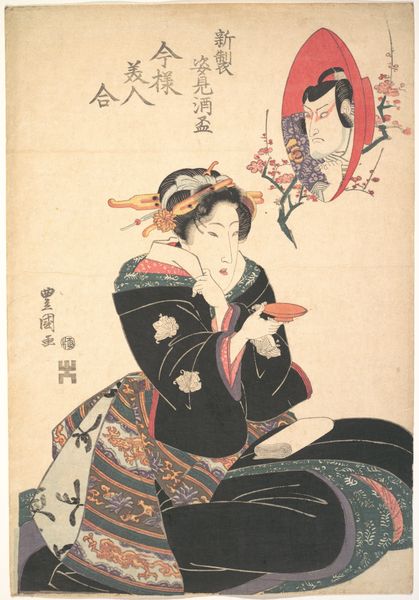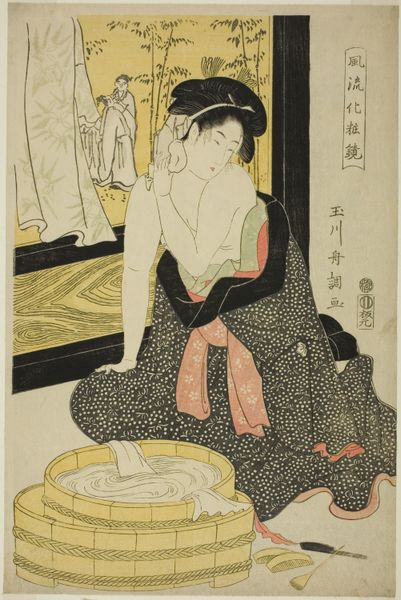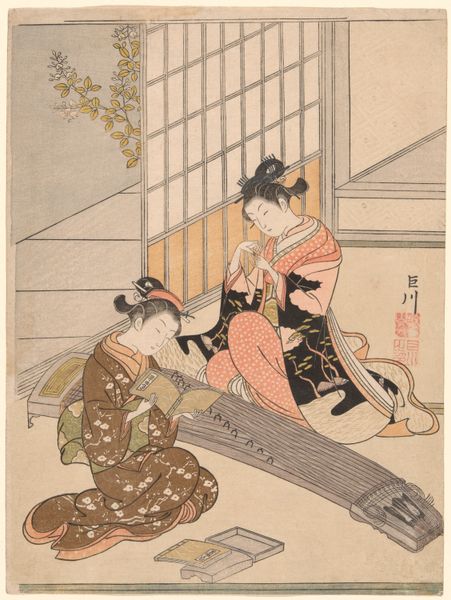
Ohana and Ofuku, from the series "A Selection of Entertainers from the Pleasure Quarters (Seiro geisha sen)" c. 1794 - 1795
0:00
0:00
print, woodblock-print
#
portrait
# print
#
asian-art
#
caricature
#
ukiyo-e
#
figuration
#
woodblock-print
#
genre-painting
#
northern-renaissance
Dimensions: 14 3/4 × 9 1/2 in.
Copyright: Public Domain
Editor: Here we have Chōbunsai Eishi's "Ohana and Ofuku, from the series 'A Selection of Entertainers from the Pleasure Quarters'," a woodblock print from around 1794 or 1795. I’m immediately drawn to the intricate detail in their kimonos and the simple, almost understated elegance of the figures. What do you see in this piece? Curator: Looking at this, I see more than just a depiction of entertainers; I see a commentary on the economic structures that supported the ukiyo-e tradition. Consider the labor involved—from the cultivation of the wood, the carving of the blocks, to the multiple printings required for each color. These weren't solitary acts of genius, but collaborative efforts embedded in a market for pleasure and status. How do these production details shape your understanding of the piece? Editor: That's a great point! I hadn't really considered the sheer number of people involved in its creation. Does the fact that it's a print, making it more accessible, change the value you place on it compared to, say, a painting? Curator: Absolutely. Prints like these circulated widely, fueling a demand for images of the floating world and also contributing to a wider economy. It challenges the traditional art world where unique, often commissioned pieces are seen as more valuable, which relies on notions of authorship and artistic genius that this method of art-making sort of dissolves. Consider also the materials: the paper, inks, and wood are all commodities with histories. Where do they come from, how were they traded, and how does this trade underpin this piece? Editor: That makes me think about the consumers too. It highlights how art like this served a different function – less about individual ownership, more about collective experience and dissemination. Curator: Precisely! And by thinking about production and reception, we can disrupt conventional hierarchies separating "high" art from popular culture. The labor and materials become part of the story and contribute just as much as subject or aesthetic style. What have you discovered that you’ll be looking for in future works we explore? Editor: Definitely thinking more about the whole network of people and materials involved in creating a piece of art, not just the artist themselves.
Comments
No comments
Be the first to comment and join the conversation on the ultimate creative platform.
